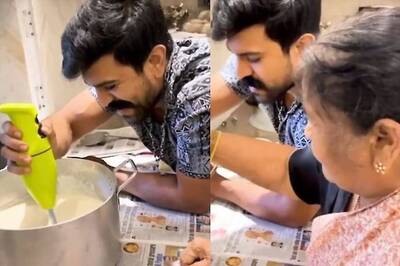
views
window._taboola = window._taboola || [];_taboola.push({mode: 'thumbnails-a', container: 'taboola-below-article-thumbnails', placement: 'Below Article Thumbnails', target_type: 'mix' });Latest News
The general notion that hand-made paper is purer than mill-made or machine-made paper is incorrect, said Pune-based art conservator and restorer S Girikumar. Speaking at the second of four lectures as part of the series ‘Understanding and managing works of art’ at Apparao Galleries, he said that very often, machine-made paper is purer than hand-made varieties.
“Unless you purify your raw materials, there is no guarantee that what you’re getting is pure,” he said “The purity also depends on the quality of water that is used to make the paper,” he added.
Asking the enthusiastic audience of artists, paper manufacturers, printers and art aficionados, to assume that the qualities of the two kinds of papers are the same, he explained the basic differences between the varieties.
“In hand-made paper, the distribution of fiber is not uniform, but in the machine-made kind, the fiber is placed in the same direction and there is uniformity,” he explained.
The best way to practically find the difference is to spray the paper with some water. “Since the fiber will swell when you spray it with water (the water is absorbed), the diameter increases and the machine-made paper expands. So it becomes sort of wavy,” Girikumar illustrated.
Moving on to give examples of degeneration with the help of a presentation, Girikumar showed the audiences a painting done in 1947 on newsprint. The yellowing deterioration of the painting is due to the pulp used in the making of the paper. “The pulp used is never purified because newsprint is a cheap form of paper,” he said.
Paintings that are stuck on display surfaces with glue also face a host of problems. “The glue in the corners darkens and it forms dark patches in those areas,” he explained, illustrating his point with an old painting that was breaking at the corners.
Without dwelling too much on the topic of framing, Girikumar said that poor quality paint or chemicals on frames will also affect the paintings. “Since the paintings are directly sitting on the frame, the area under the frame alone will darken,” he said.
Tight frames are also trouble-causing, he cautioned. Since the paintings will absorb moisture after a while, they start expanding. “And since they have no space to expand within the frame, they can no longer remain flat and tend to get wavy,” he elaborated.
I




















Comments
0 comment